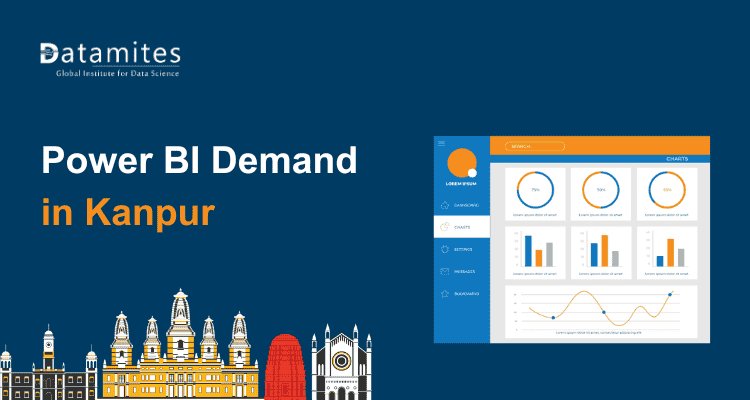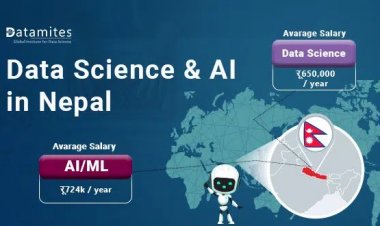Data Analyst vs. Data Scientist: Understanding the Roles and Responsibilities

In today’s data-driven world, information is power. Organizations of all sizes are gathering data at an unprecedented rate, recognizing its value in shaping decisions, driving strategy, and understanding customer behavior. As the volume of data increases, so does the need for professionals who can interpret, analyze, and transform raw data into actionable insights.
Two key roles emerge in this landscape: Data Analysts and Data Scientists. While both are essential for deriving insights from data, their roles and skill sets vary significantly. In this blog post, we’ll explore the distinctions and overlaps between these two professions, helping you determine which career path might be right for you.
Definition of Data Analyst
A Data Analyst transforms large datasets into understandable reports, collaborating with departments like marketing, sales, and finance to support data-informed decision-making. According to IBM, demand for data analysts is expected to grow by 28% by 2026, highlighting the increasing reliance on data insights. This position is centered on descriptive analysis, where the emphasis is on analyzing historical data to uncover trends.
Data Analysts are vital for organizations, as they help stakeholders understand past and present performance. A McKinsey study shows that companies effectively using data analytics are 23 times more likely to acquire customers, 6 times more likely to retain them, and 19 times more likely to be profitable. They create dashboards and visualizations to provide clear performance insights and identify improvement areas.
Read these articles:
Definition of Data Scientist
Data Scientists enhance data analysis by employing advanced techniques like machine learning and predictive modeling to forecast outcomes and drive innovation. According to the U.S. Bureau of Labor Statistics, employment for data scientists is expected to grow by 31% from 2019 to 2029, significantly outpacing other occupations. Their role is crucial in today’s data-rich environment, with a McKinsey report predicting a demand exceeding supply by 250,000 professionals by 2024. Data Scientists optimize customer experiences, improving satisfaction by 10% to 30%, and contribute to the development of AI-driven products, unlocking new opportunities for organizations.
Key Responsibilities of a Data Analyst and Data Scientist
Data Analysts and Data Scientists play crucial roles in data-driven decision-making, but their responsibilities and skill sets differ. Here’s a fresh take on the primary duties associated with each role:
Responsibilities of a Data Analyst
- Data Collection and Cleaning: Source and ensure accuracy of data from various databases.
- Data Visualization and Reporting: Create reports and dashboards using tools like Power BI or Tableau.
- Statistical Analysis and Interpretation: Analyze datasets to identify patterns and trends for business decisions.
- Working with Stakeholders: Collaborate with departments to understand data needs and provide insights.
Responsibilities of a Data Scientist
- Advanced Data Modeling and Machine Learning: Design predictive models using algorithms and machine learning.
- Experimentation and Algorithm Development: Conduct A/B testing and other experiments to drive outcomes.
- Data Engineering Tasks: Collaborate with data engineers on data pipeline development and maintenance.
- Communicating Complex Insights: Simplify complex data concepts for non-technical stakeholders.
Data Analysts make data accessible to non-technical teams, while Data Scientists reveal deeper trends to inform business strategies.
Essential Skills for Data Analysts and Data Scientists
Data analysts and data scientists play crucial roles in data-driven decision-making across various industries. Although their responsibilities can overlap, the skills required for each role often differ. Here’s a breakdown of the essential skills for both data analysts and data scientists:
Skills for Data Analysts
- Technical Skills: Expertise in SQL, Excel, and data visualization platforms such as Tableau and Power BI.
- Analytical and Critical Thinking: Ability to identify trends and correlations in data.
- Communication Skills: Translating data findings into actionable insights for non-technical stakeholders.
Skills for Data Scientists
- Programming Proficiency: Expertise in Python or R for handling large datasets and building models.
- Machine Learning and Statistical Modeling: Knowledge of algorithms for making predictions.
- Data Engineering Skills: Experience with big data technologies like Hadoop and Spark.
- Strong Problem-Solving Skills: Capability to address complex problems and devise innovative data solutions.
These skills enable Data Analysts to deliver clear insights, while Data Scientists tackle complex challenges with advanced techniques.
Read these articles:
- What is Datamites Certified Data Analyst Certification
- What is Certified Data Scientist Course
- What Is AI Engineer Course
Tools and Technologies Used by Data Analysts and Data Scientists
Data analysts and data scientists utilize a variety of tools and technologies to collect, analyze, visualize, and interpret data. Here’s an overview of some of the most commonly used tools in these fields:
Common Tools Used by Data Analysts
Data Analysts rely on several key tools to perform their work efficiently:
- Data Visualization Tools: Tableau, Power BI, and Qlik are commonly used for creating reports and dashboards.
- SQL Databases: SQL is the primary language for querying databases, a skill every Data Analyst must master.
- Excel and Spreadsheets: Even with the advent of sophisticated tools, Excel continues to be a fundamental choice for basic data analysis and manipulation.
These tools allow Data Analysts to extract and present insights quickly and effectively.
Common Tools Used by Data Scientists
Data Scientists work with a more technical stack, which includes:
- Programming Environments: Jupyter Notebooks and IDEs like PyCharm for coding and data manipulation.
- Machine Learning Libraries: TensorFlow, Scikit-learn, and Keras are essential for building predictive models.
- Big Data Tools: Technologies like Hadoop and Apache Spark enable them to process and analyze large datasets efficiently.
These tools empower Data Scientists to handle more complex tasks, such as building models that can predict future trends and optimize processes.
Career Paths for Data Analyst
Data analysts are essential in organizations, interpreting and analyzing data to support decision-making. The field offers various roles and career trajectories:
Entry-Level Positions of Data Analysts
- Junior Data Analyst: Helps with gathering, organizing, and performing preliminary analysis of data; proficiency in Excel and fundamental statistical methods is necessary. The typical annual salary for a Junior Data Analyst in India is ₹4,53,251, while in the United States, it averages $85,104, according to Glassdoor.
- Business Analyst: Understands business needs and translates them into data requirements, collaborating closely with stakeholders. The average salary for an entry-level Business Analyst in the United States is $114,788 per year, while in India, the average salary for a Business Analyst is ₹8,50,000 annually (Glassdoor).
- Data Technician: Manages and organizes data to ensure accessibility for analysis.
Mid-Level Positions of Data Analysts
- Data Analyst: Conducts complex analyses, creates reports, and communicates findings; proficient in SQL, Python, or R. In India, the average annual salary for a Data Analyst is ₹7,80,000, while in the United States, it stands at $1,08,694, according to Glassdoor.
- Quantitative Analyst: Specializes in statistical modeling to solve business problems, often in finance or marketing. The average annual salary for a Quantitative Analyst in India is ₹20,15,138, while in the United States, it is $2,53,438, according to Glassdoor.
- Marketing Analyst: Analyzes marketing data to understand consumer behavior and campaign effectiveness. The average annual salary for a Marketing Analyst in the United States is $105,918, while in India, it is ₹1,165,409. (Glassdoor)
Senior-Level Positions of Data Analysts
- Senior Data Analyst: Mentors junior analysts, manages larger projects, and contributes to strategic decision-making. In India, the average annual salary for a Senior Data Analyst is ₹13,20,000, while in the United States, it is $160,679 per year, according to Glassdoor.
- Data Scientist: Integrates analytical techniques with machine learning to create predictive models and algorithms. In India, the average annual salary for a Data Scientist is ₹13,82,500, while in the United States, it is $159,748, according to Glassdoor.
- Business Intelligence Analyst: Enhances business operations using data visualization and reporting tools. The typical annual salary for a Senior Business Intelligence Analyst in India is ₹15,39,238, while in the United States, it is approximately $178,000 (according to Glassdoor).
Read these articles:
- Data Science Course Fee in India
- Data Analyst Course Fee in India
- Data Analyst Career Scope in India
Career Path for Data Scientists
Data science is increasingly a sought-after field due to the growing demand for data-driven decision-making. Here’s a concise overview of key career paths and opportunities for data scientists:
Entry-Level Positions of Data Scientists
- Data Science Intern: Supports teams with data preparation and basic modeling; requires familiarity with Python or R and basic statistics. According to Glassdoor, the average annual salary for a Data Scientist Intern in the United States is $121,514. In contrast, the average monthly earnings for the same role in India stand at ₹17,200.
- Junior Data Scientist: Assists in exploratory data analysis, visualizations, and simple predictive models; knowledge of Pandas and NumPy is essential. According to Glassdoor, the average annual salary for a Junior Data Scientist is ₹7,23,581 in India and $1,26,406 in the United States.
- Data Analyst: Interprets datasets for business insights; requires proficiency in SQL and data visualization tools like Tableau or Power BI.
Mid-Level Positions of Data Scientists
- Data Scientist: Conducts analyses and builds machine learning models; proficient in Python, R, and data visualization techniques.
- Machine Learning Engineer: Designs and implements machine learning algorithms; requires strong software engineering skills and knowledge of frameworks like TensorFlow or PyTorch. As per Glassdoor, the typical annual compensation for a Machine Learning Engineer in India is ₹11,20,000, whereas in the United States, it is approximately $165,522 annually.
- Business Intelligence Developer: Develops BI solutions and dashboards; proficient in data warehousing concepts and BI tools. As per Glassdoor, the typical yearly earnings for a BI Developer in India are approximately ₹7,74,826, while in the United States, the average salary stands at around $1,24,549.
Senior-Level Positions of Data Scientists
Senior Data Scientist: Leads projects and mentors junior staff; expertise in machine learning and statistical analysis. According to Glassdoor, the average annual salary for a Senior Data Scientist is ₹26,25,000 in India, while in the United States, it is $2,39,599 per year.
Data Science Manager: Oversees teams and aligns data initiatives with business goals; requires leadership and project management skills. According to Glassdoor, the average annual salary for a Data Science Manager in the United States is $241,309, while in India, it is ₹38,58,589.
Chief Data Officer (CDO): Responsible for the organization’s data strategy and governance, ensuring effective data utilization across the organization.
Similarities and Differences of Data Analysts and Data Scientists
Data analysts and data scientists both play crucial roles in organizations that rely on data-driven decision-making. However, their focuses, skill sets, and responsibilities can differ significantly. Here’s an overview of their similarities and distinctions:
Overlapping Skills and Responsibilities
Despite the differences, Data Analysts and Data Scientists share common ground in:
- Data Visualization: Both roles require proficiency in visualizing data to communicate findings.
- Statistical Analysis: Both professionals must understand statistical methods to draw meaningful conclusions from data.
These shared skills highlight the importance of having a strong foundation in data analysis before progressing into more advanced techniques.
Distinct Differences
However, significant differences exist between these roles:
- Scope of Work: Data Analysts primarily concentrate on interpreting historical and current data, whereas Data Scientists take a forward-looking approach, using data to forecast future trends and outcomes.
- Technical Expertise: Data Scientists typically require more advanced programming and machine learning skills compared to Data Analysts.
Understanding these distinctions is essential for anyone considering a career in either field.
Both Data Analysts and Data Scientists play critical roles in today’s data-centric landscape. The decision between the two ultimately hinges on your personal interests and strengths. If you enjoy reporting and interpreting data, a Data Analyst role might be for you. If you love building models and predicting outcomes, consider exploring Data Science training to enhance your skills and career potential.
DataMites Training Institute is a prominent provider of professional training in data science and analytics. Their comprehensive Data Analytics Course aims to equip learners with vital skills in data interpretation and analysis. In collaboration with prestigious organizations like IABAC and NASSCOM FutureSkills, DataMites offers certifications that are recognized across the industry. DataMites institute also offers a wide range of courses, including Artificial Intelligence, Data Science, Machine Learning, and Python Programming. Each program is carefully designed to align with the evolving needs of the tech industry, helping to boost career opportunities and technical proficiency.





